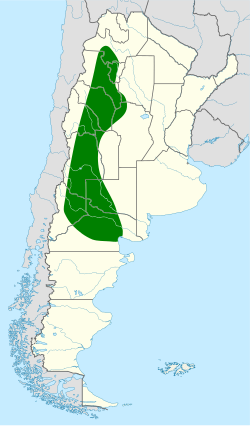| Sandy gallito | |
|---|---|
 | |
| Scientific classification | |
| Kingdom: | Animalia |
| Phylum: | Chordata |
| Class: | Aves |
| Order: | Passeriformes |
| Family: | Rhinocryptidae |
| Genus: | Teledromas Wetmore & Peters, 1922 |
| Species: | T. fuscus |
| Binomial name | |
| Teledromas fuscus (Sclater, PL & Salvin, 1873) | |
 | |
The sandy gallito (Teledromas fuscus) is a species of suboscine passerine bird in the family Rhinocryptidae, the tapaculos. It is the only species placed in the genus Teledromas. It is endemic to Argentina.

